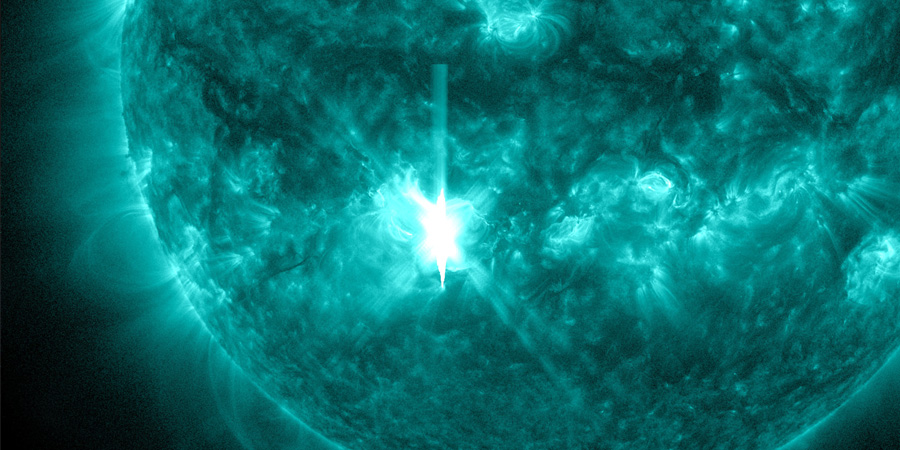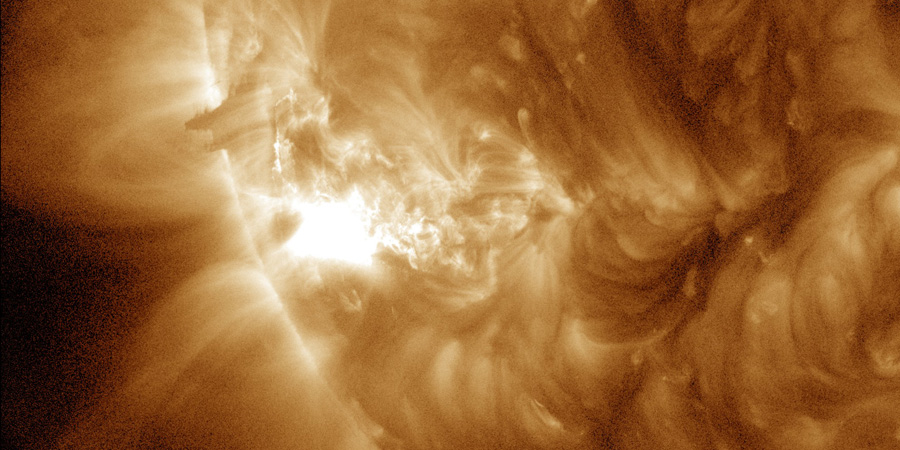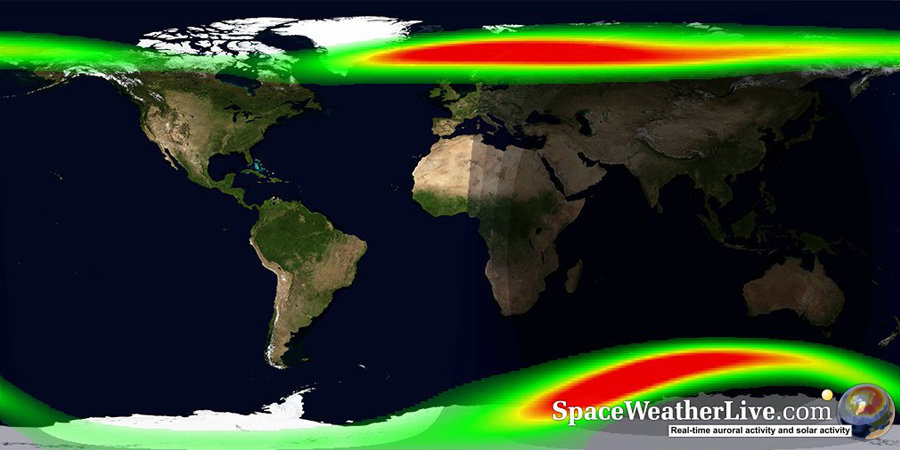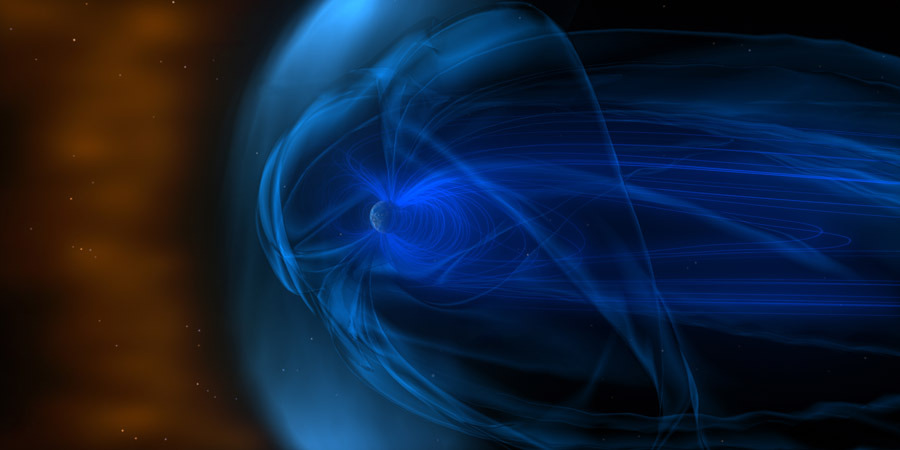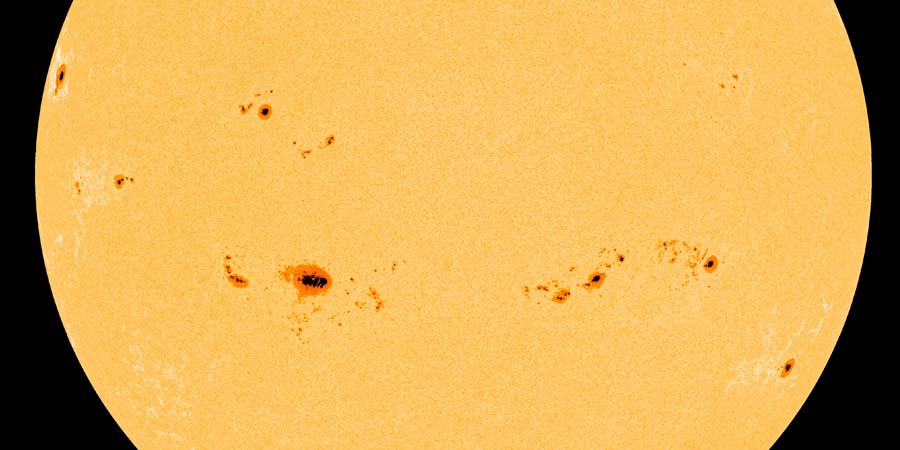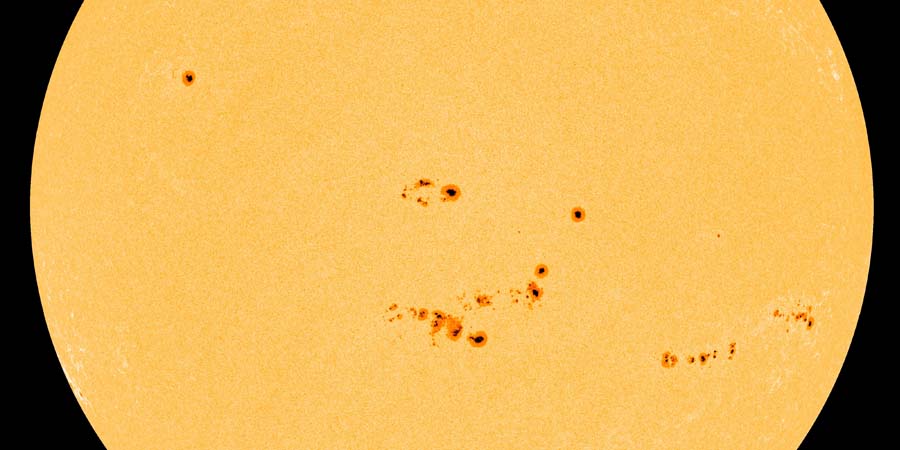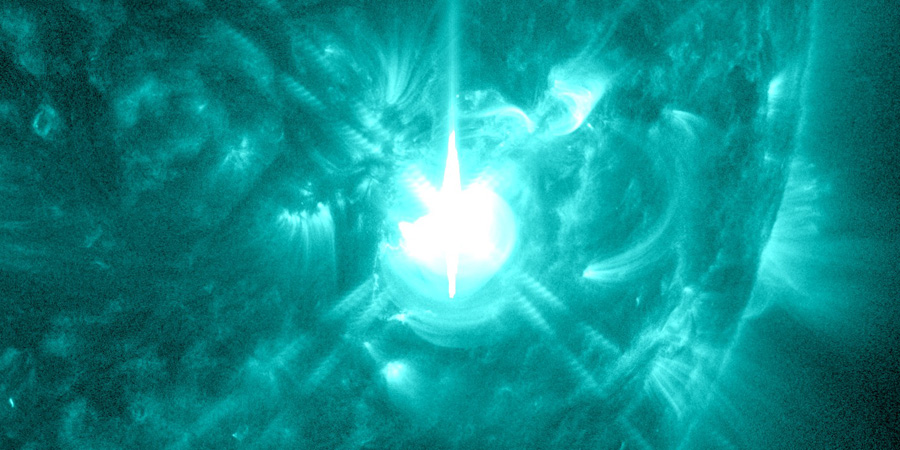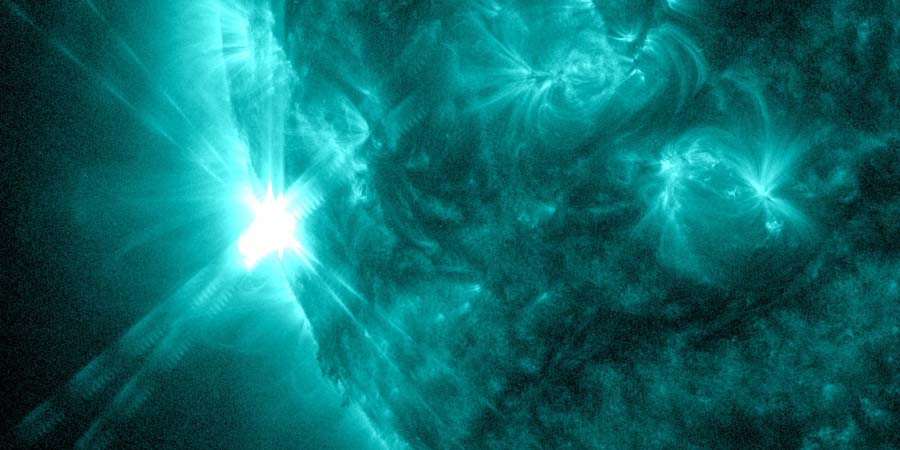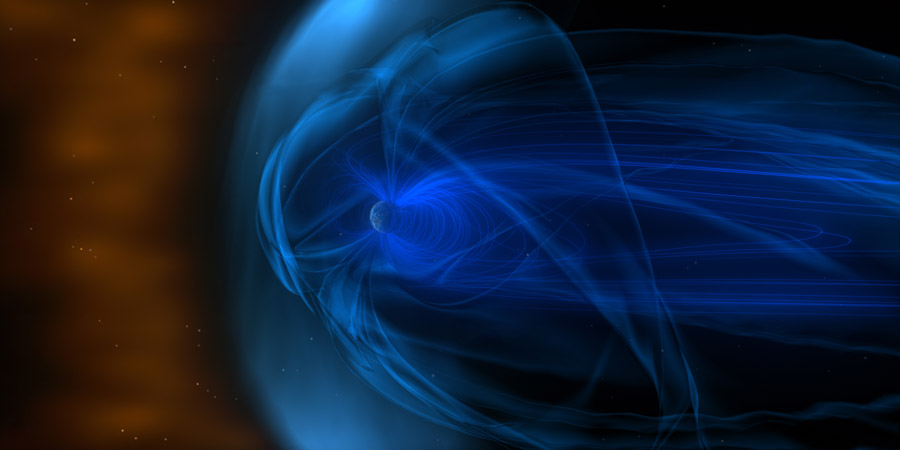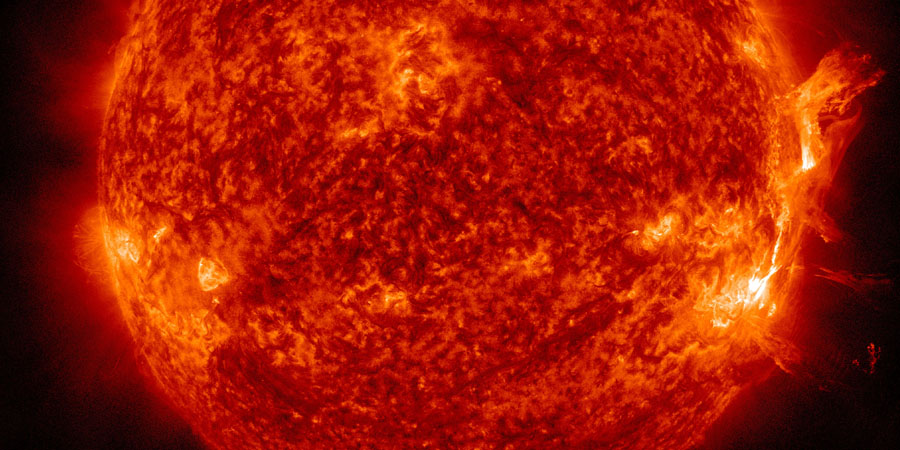Latest news updates Subscribe
X7.1 solar flare with earth-directed CME
mercoledì, d.C. ottobre AM 02:43 UTC
A major X7.1 solar flare (R3 radio blackout) peaked on 1 October at 22:20 UTC. The eruption took place around complex Beta-Gamma-Delta sunspot region 3842 close to the center of the earth-facing solar disk. This was in fact the second strongest solar flare of the current Solar Cycle thus far! An exciting jump in solar activity after a relatively quiet period with multiple potent sunspot regions currently on the solar disk!
X4.5 solar flare with a fast coronal mass ejection
sabato, d.C. settembre PM 22:22 UTC
Sunspot region 3825 which is close to the east limb and slowly rotating into an earth-facing position has produced a long-duration X4.5 class solar flare (R3-strong) today that peaked at 15:29 UTC. This is the fifth largest solar flare of the current Solar Cycle.
G3 geomagnetic storm watch due to CME passage
giovedì, d.C. settembre PM 17:57 UTC
Earlier today we saw the arrival of one but perhaps even multiple coronal mass ejections at our planet. Geomagnetic storm conditions up the G3 (Kp7) level have already been observed but we are still very much under the influence of these coronal mass ejections as they pass Earth.
Severe G4 geomagnetic storm
lunedì, d.C. agosto PM 15:11 UTC
Severe G4 geomagnetic storm conditions have now been observed which stands for a Kp of 8!
Solar maximum is here! G2 storm watch and X-flare!
giovedì, d.C. agosto PM 20:16 UTC
Our Sun has been very busy the past few weeks and we have now reached the highest official monthly mean sunspot number in 23 years during the month of July! We landed on a whopping 196.5 and August thus far averages an incredible monthly mean sunspot number of 222.3! Is this going to be solar maximum when we look back at Solar Cycle 25 in the coming years? It seems likely!
G3 geomagnetic storm watch
lunedì, d.C. luglio PM 16:12 UTC
Good day everyone. We hope all of our visitors are enjoying their summer or of course their winter for the folks down under! We sure have been enjoying our summer break after what was a crazy month of May for the website during the period of the extreme G5 geomagnetic storm. Our apologies for the lack of updates despite the fairly active space weather but it is good to see many of our users activity using the app and enjoying the automated alerts to keep them informed. As a lot of you have noticed that your phone has been vibrating a lot due to high flaring activity on the Sun. As a matter of fact we have had at least one M or X-class solar flare every day ever since the 13th of July!
X1.2 solar flare
domenica, d.C. luglio PM 12:23 UTC
It is July 14th and that calls for fireworks. We congratulate our French friends with their national holiday, Bastille Day, and so does our Sun.
Old sunspot region 3664 returns with an M9.3 solar flare!
domenica, d.C. giugno PM 15:15 UTC
Old sunspot region 3664 and more recently 3697 is back for a third visit of the earth-facing solar disk. The region received sunspot number 3723 and immediately announced its return with an impulsive and non-eruptive M9.3 (R2-moderate) solar flare that peaked at 13:01 UTC. It has decayed heavily as expected of course but there still seems to be some gas in the tank for major eruptions! Exciting!
CME impact, X1.5 solar flare
lunedì, d.C. giugno PM 17:16 UTC
The anticipated M9.3 coronal mass ejection has arrived at our planet. As expected, it looks like a glancing blow with the solar wind speed increasing to a modest 430km/s with the interplanetary magnetic field strength (Bt) increasing to about 15nT. A minor G1 geomagnetic storm watch is in effect for the remainder of today.
M9.3 solar flare, S3 proton storm, Earth-directed CME
sabato, d.C. giugno PM 15:29 UTC
Sunspot region 3697 has been relatively quiet the past few days as she made her way towards the west limb but she was not planning to exit stage right without one final song. At 01:49 UTC this night the region produced a highly eruptive long duration M9.7 (R2-moderate) solar flare.
Ultime notizie
Ultimi messaggi dal forum
Supporta SpaceWeatherLive.com!
Molte persone vengono su SpaceWeatherLive per seguire l'attività del Sole o sapere se ci sia la possibilità di vedere l'aurora, ma a maggior traffico corrispondono costi maggiori. Considerate una donazione se vi piace SpaceWeatherLive così che possiamo mantenere online il sito web!

Notizie sul meteo spaziale
| Ultimo brillamento X | 2025/03/28 | X1.1 |
| Ultimo brillamento M | 2025/04/01 | M2.5 |
| Ultima tempesta geomagnetica | 2025/03/27 | Kp5 (G1) |
| Giorni senza macchie | |
|---|---|
| Ultimo giorno senza macchie | 2022/06/08 |
| Media mensile Numero di Macchie Solari | |
|---|---|
| febbraio 2025 | 154.6 +17.6 |
| aprile 2025 | 152.5 -2.1 |
| Ultimi 30 giorni | 130.7 -17.9 |
